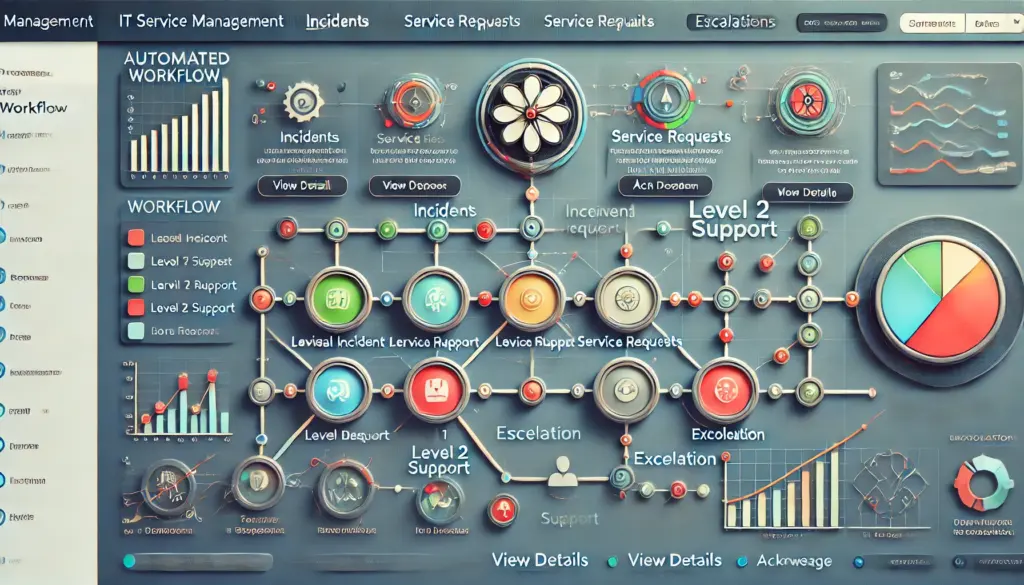🏢 Business Impact Analysis: A Key Skill for Incident Leaders
📌 Introduction
In the fast-paced world of incident management, understanding the impact of an outage is just as critical as resolving the issue itself. Business Impact Analysis (BIA) is a crucial skill for incident leaders, helping them assess potential risks, minimize downtime, and safeguard business operations.
In this in-depth guide, we’ll explore:
✅ What Business Impact Analysis is and why it’s essential.
✅ The role of BIA in incident management and business continuity.
✅ A detailed step-by-step approach to conducting a BIA.
✅ Best practices and tools to enhance the BIA process.
✅ Real-world case studies showcasing successful BIA implementations.
✅ Common mistakes to avoid when performing BIA.

🔍 What is Business Impact Analysis (BIA)?
Business Impact Analysis (BIA) is the process of identifying and evaluating the effects of disruptions on business operations. It helps organizations determine the financial, operational, and reputational impact of an incident.
A successful BIA allows incident leaders to: 🔹 Prioritize critical business functions.
🔹 Identify key dependencies between systems and processes.
🔹 Establish recovery time objectives (RTOs) and recovery point objectives (RPOs).
🔹 Ensure compliance with business continuity and disaster recovery (BCDR) plans.
🔹 Minimize downtime and reduce the overall cost of incidents.
BIA is a proactive approach that ensures organizations are not caught off guard when an incident occurs. Instead, they have a well-defined strategy in place to respond quickly and efficiently.
🎯 Why is BIA Critical for Incident Leaders?
As an incident leader, your job isn’t just to resolve incidents but also to prevent major business disruptions. Here’s why BIA is a game-changer:
1️⃣ Reduces Downtime & Financial Loss
Unplanned outages can cost businesses thousands of dollars per minute. A well-structured BIA helps you focus on high-priority issues first, ensuring rapid recovery and minimizing financial loss.
2️⃣ Enhances Decision-Making
With BIA, you get a clear roadmap of business-critical functions, helping you make data-driven decisions during an incident. When a system fails, knowing which services are most critical allows for a prioritized and efficient recovery process.
3️⃣ Improves Communication & Collaboration
Incident leaders must collaborate with multiple teams, including IT, finance, compliance, and operations. BIA provides a structured framework, ensuring everyone stays on the same page with clearly defined roles and responsibilities.
4️⃣ Strengthens Compliance & Risk Management
Regulatory frameworks like ISO 22301, GDPR, and NIST require businesses to have business continuity and risk management strategies in place. BIA ensures compliance with these standards and helps mitigate risks associated with data breaches, cyberattacks, and infrastructure failures.
📌 Step-by-Step Guide to Conducting a Business Impact Analysis
📋 Step 1: Identify Critical Business Functions
To conduct a thorough BIA, start by identifying all business processes and categorizing them based on criticality:
| Priority Level | Business Function | Impact of Disruption |
|---|---|---|
| Mission-Critical | Payment Processing | Immediate financial loss & customer impact |
| High Priority | Customer Support | Delayed response times & reduced satisfaction |
| Moderate Priority | Marketing Campaigns | Temporary inconvenience but no immediate loss |
| Low Priority | Internal Reporting | Minimal impact on business operations |
⏳ Step 2: Determine Recovery Objectives
Two key metrics to define:
- Recovery Time Objective (RTO): Maximum allowable downtime before a function must be restored.
- Recovery Point Objective (RPO): Maximum acceptable data loss in case of an incident.
🔄 Step 3: Identify Dependencies & Resources
Map out dependencies between systems, teams, and third-party vendors. Consider:
- IT infrastructure (Servers, Databases, Networks)
- Human resources (Key personnel required for recovery)
- Third-party services (Cloud providers, Payment gateways)
🚨 Step 4: Assess the Impact of Disruptions
Evaluate the impact of system failures on:
- Revenue Loss
- Operational Delays
- Customer Trust & Reputation
- Legal & Compliance Issues
✅ Step 5: Develop & Test Mitigation Strategies
Once the impact is assessed, establish a business continuity plan (BCP) with:
- Automated failover strategies
- Data backup & disaster recovery plans
- Incident response workflows
Regularly test your BIA through simulated incident drills to ensure its effectiveness.
📌 Best Practices for Effective BIA
💡 Keep BIA Updated: Businesses evolve, and so should your BIA process. Update it regularly to reflect new risks and priorities.
💡 Involve All Stakeholders: Collaborate with IT, finance, operations, and compliance teams to get a comprehensive view.
💡 Leverage Technology: Use tools like ServiceNow, New Relic, and Grafana for real-time impact analysis.
💡 Automate Where Possible: AI-powered monitoring tools can help detect issues before they escalate.
💡 Document Everything: Maintain clear records of impact assessments and action plans for future reference.
❓ Frequently Asked Questions (FAQs)
❓ What is the purpose of Business Impact Analysis?
BIA helps organizations understand the potential effects of disruptions on their business processes and enables them to develop strategies for minimizing downtime and financial losses.
❓ How often should a Business Impact Analysis be conducted?
BIA should be reviewed and updated at least annually or whenever there are significant changes in business operations, IT infrastructure, or regulatory requirements.
❓ What’s the difference between BIA and Risk Assessment?
BIA focuses on the impact of disruptions on business operations, while risk assessment identifies threats and vulnerabilities that could lead to such disruptions.
❓ Who should be involved in the Business Impact Analysis process?
Key stakeholders, including IT, finance, compliance, operations, and senior management, should participate in the BIA process to ensure comprehensive coverage of all business functions.
❓ How can I automate Business Impact Analysis?
You can use tools like ServiceNow, New Relic, Grafana, and disaster recovery software to automate data collection, risk assessments, and impact analysis.
🚀 Conclusion
For incident leaders, mastering Business Impact Analysis isn’t optional—it’s a necessity. A well-executed BIA helps organizations prioritize incidents, reduce downtime, and protect their bottom line.
🔹 Want to enhance your incident management skills? Start implementing BIA today and make data-driven decisions that keep your business running smoothly! 🚀
📚 Learn More:
💬 Have insights or experiences with BIA? Drop your thoughts in the comments below!
🔔 Subscribe for more insights on incident management and business continuity!




